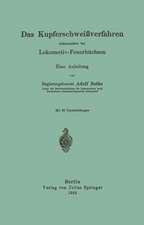Effects of Hypergravity and Microgravity on Biomedical Experiments, The: Synthesis Lectures on Biomedical Engineering
Autor Thais Russomano, Gustavo Dalmarco, Felipe Prehn Falcaoen Limba Engleză Paperback – 31 dec 2007
Din seria Synthesis Lectures on Biomedical Engineering
- 17%
 Preț: 362.02 lei
Preț: 362.02 lei - 15%
 Preț: 522.24 lei
Preț: 522.24 lei - 5%
 Preț: 364.74 lei
Preț: 364.74 lei - 5%
 Preț: 525.87 lei
Preț: 525.87 lei - 15%
 Preț: 636.80 lei
Preț: 636.80 lei -
 Preț: 382.95 lei
Preț: 382.95 lei -
 Preț: 268.83 lei
Preț: 268.83 lei -
 Preț: 260.77 lei
Preț: 260.77 lei -
 Preț: 266.32 lei
Preț: 266.32 lei -
 Preț: 265.18 lei
Preț: 265.18 lei -
 Preț: 262.47 lei
Preț: 262.47 lei -
 Preț: 204.76 lei
Preț: 204.76 lei -
 Preț: 268.66 lei
Preț: 268.66 lei -
 Preț: 262.47 lei
Preț: 262.47 lei -
 Preț: 206.84 lei
Preț: 206.84 lei -
 Preț: 321.54 lei
Preț: 321.54 lei -
 Preț: 192.05 lei
Preț: 192.05 lei -
 Preț: 261.32 lei
Preț: 261.32 lei -
 Preț: 261.53 lei
Preț: 261.53 lei -
 Preț: 206.84 lei
Preț: 206.84 lei -
 Preț: 349.36 lei
Preț: 349.36 lei -
 Preț: 260.95 lei
Preț: 260.95 lei -
 Preț: 204.76 lei
Preț: 204.76 lei -
 Preț: 391.02 lei
Preț: 391.02 lei -
 Preț: 268.83 lei
Preț: 268.83 lei -
 Preț: 205.92 lei
Preț: 205.92 lei -
 Preț: 382.57 lei
Preț: 382.57 lei -
 Preț: 346.48 lei
Preț: 346.48 lei -
 Preț: 264.41 lei
Preț: 264.41 lei -
 Preț: 384.48 lei
Preț: 384.48 lei -
 Preț: 259.04 lei
Preț: 259.04 lei -
 Preț: 260.95 lei
Preț: 260.95 lei -
 Preț: 261.32 lei
Preț: 261.32 lei -
 Preț: 158.66 lei
Preț: 158.66 lei -
 Preț: 267.86 lei
Preț: 267.86 lei -
 Preț: 207.65 lei
Preț: 207.65 lei -
 Preț: 205.92 lei
Preț: 205.92 lei -
 Preț: 268.66 lei
Preț: 268.66 lei -
 Preț: 322.31 lei
Preț: 322.31 lei -
 Preț: 226.22 lei
Preț: 226.22 lei - 15%
 Preț: 404.48 lei
Preț: 404.48 lei -
 Preț: 263.28 lei
Preț: 263.28 lei -
 Preț: 383.71 lei
Preț: 383.71 lei -
 Preț: 273.45 lei
Preț: 273.45 lei -
 Preț: 207.06 lei
Preț: 207.06 lei -
 Preț: 263.06 lei
Preț: 263.06 lei -
 Preț: 260.77 lei
Preț: 260.77 lei -
 Preț: 205.33 lei
Preț: 205.33 lei
Preț: 205.70 lei
Nou
Puncte Express: 309
Preț estimativ în valută:
39.36€ • 41.18$ • 32.70£
39.36€ • 41.18$ • 32.70£
Carte tipărită la comandă
Livrare economică 03-17 aprilie
Preluare comenzi: 021 569.72.76
Specificații
ISBN-13: 9783031004964
ISBN-10: 3031004965
Ilustrații: VI, 70 p.
Dimensiuni: 191 x 235 mm
Greutate: 0.15 kg
Editura: Springer International Publishing
Colecția Springer
Seria Synthesis Lectures on Biomedical Engineering
Locul publicării:Cham, Switzerland
ISBN-10: 3031004965
Ilustrații: VI, 70 p.
Dimensiuni: 191 x 235 mm
Greutate: 0.15 kg
Editura: Springer International Publishing
Colecția Springer
Seria Synthesis Lectures on Biomedical Engineering
Locul publicării:Cham, Switzerland
Cuprins
General Concepts in Physics - Definition of Physical Terms.- The Effects of Hypergravity on Biomedical Experiments.- The Effects of Microgravity on Biomedical Experiments.- References.
Notă biografică
Thais Russomano graduated with a degree in medicine from the Federal University of Pelotas, Brazil, in 1985, a masters degree in aerospace medicine from Wright State University, United States, in 1991, and a doctor of philosophy degree in space physiology from King’s College London, United Kingdom, in 1998. She is the founder and coordinator of the internationally recognized Centre of Microgravity at PUCRS University Brazil (a unique reference center of Latin America in the study of human space physiology and space biomedical engineering), an associate professor of PUCRS University, a guest scientist at the German Space Agency, and a visiting professor/senior research fellow at King’s College London. She has more than 15 years experience in the fields of aerospace medicine, aerospace bio[1]medicine, aerospace biomedical engineering and telemedicine, including participation in numerous scientific events and publication of more than 200 scientific articles. Research areas and professional experience include microgravity, hypogravity and hypergravity simulations, parabolic flights with the European Space Agency, hyperbaric and hypobaric chambers studies, tests in human centrifuges, rotator (Barany) chair, flight simulators, and lower body negative pressure boxes. She won several national and international awards in the area of space life science research. Gustavo Dalmarco is a biomedical engineer and international researcher in aerospace biomedical engineering. He developed projects with research and teaching institutions, such as the German Space Agency and King’s College London and has five years experience working with aerospace medicine research including one European Space Agency parabolic flight campaign. He is involved in the development of hypergravity and micro[1]gravity simulation devices, lower body negative pressure box, human centrifuge, rotator (Barany) chairs, biofeed[1]back systems, and clinostats . Felipe Prehn Falcão is an automation and control engineer and international researcher in aerospace biomedical engineering based at the Cen[1]tre of Microgravity at PUCRS, Brazil. He has 5 years experience in the development of projects with research and teaching institutions in this area working with the German Space Agency, NASA, and King’s College London. He has experience in aerospace medicine research including participation in a European Space Agency parabolic flight campaign (2006). He is involved in the development of hypergravity and microgravity simulation devices, lower-body negative-pressure box, rotator (Barany) chair, clinostat, human centrifuge, and biofeedback systems. Author Biography 70 Effects of Hyper- and Microgravity on biomedical experiments He was responsible for the conception and development of the Valsalva maneuver equipment, gaining national recognition and an award in the Siemens Prize of Technology Innovation for new projects. He published many scientific articles and papers worldwide during congresses and via journals.

























